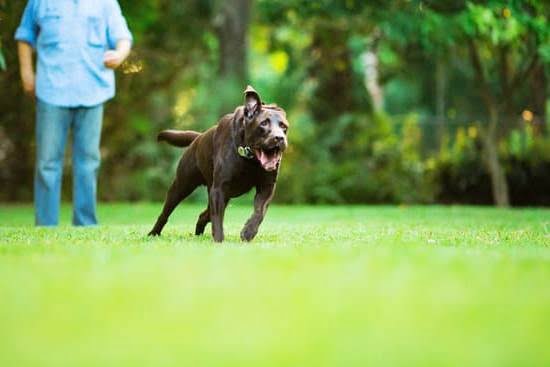Panic attacks can be a debilitating experience for both humans and our furry companions. Learning how to train a dog for panic attacks can make a significant difference in their well-being and our peace of mind. Understanding what causes panic attacks in dogs and being able to identify the signs are crucial first steps in providing support for our four-legged friends.
Various factors can trigger panic attacks in dogs, such as past traumatic experiences, separation anxiety, or even certain noises or situations. The signs of a panic attack in dogs can range from trembling, excessive barking, panting, pacing, to destructive behaviors like chewing furniture or digging. By being attentive to these cues, pet owners can offer timely assistance and work towards training their dogs to cope with such episodes effectively.
Having a trained dog for panic attacks comes with numerous benefits. Not only does it provide a sense of security and companionship for individuals prone to anxiety, but it also enhances the bond between the pet and its owner. Selecting the right dog breed that aligns with your lifestyle and temperament is essential for successful training. Building a strong bond based on trust and communication is key to unlocking your dog’s potential in assisting you during panic attacks.
The Benefits of Having a Trained Dog for Panic Attacks
Dogs have an incredible ability to sense their owner’s emotions and provide comfort and support in times of distress. When it comes to panic attacks, a trained dog can make a significant difference in helping individuals cope with these overwhelming episodes.
One of the key benefits of having a trained dog for panic attacks is their innate ability to recognize the signs of an impending attack before it fully escalates. This early detection can help the individual take necessary steps to mitigate the intensity of the panic attack.
Moreover, a trained dog can provide emotional support and a sense of security during moments of high anxiety. Whether through physical contact, such as leaning against their owner or providing deep pressure therapy, dogs can help reduce feelings of fear and anxiety during a panic attack. This reassurance and companionship can be immensely comforting for individuals experiencing these challenging episodes.
In addition to emotional support, a trained dog for panic attacks can also assist in guiding their owner to safety or a calmer environment during an episode. With proper training, dogs can learn to lead their owners away from stressful situations or towards a designated safe space where they can recover from the panic attack. This level of guidance and assurance can be invaluable for individuals who struggle with managing their anxiety levels on their own.
| Key Benefits | Description |
|---|---|
| Early Detection | A trained dog can recognize signs of an impending panic attack, allowing for preemptive measures. |
| Emotional Support | Dogs provide comfort and security during high-anxiety moments through physical contact and companionship. |
| Guidance to Safety | Trained dogs can lead their owners away from stress-inducing environments to designated safe spaces. |
Selecting the Right Dog Breed for Training
Some breeds are known for their calm and reassuring demeanor, making them ideal candidates for panic attack training. These include Golden Retrievers, Labrador Retrievers, and German Shepherds, which are often used as service dogs due to their gentle nature and high intelligence. Additionally, smaller breeds like Cavalier King Charles Spaniels and Poodles can also excel in providing comfort and assistance during stressful situations.
It is essential to select a breed that not only meets the requirements for effective panic attack training but also matches your lifestyle and living situation. For example, if you live in an apartment with limited space, a smaller breed may be more suitable than a larger one. Likewise, if you have allergies or sensitivities to pet dander, hypoallergenic breeds like the Bichon Frise or Maltese could be a better choice.
In order to ensure the success of your dog’s panic attack training, take the time to research different breeds and consider their unique characteristics carefully. Remember that each dog is an individual with its own personality traits, so it is essential to spend time getting to know your potential canine partner before embarking on training sessions.
By selecting the right dog breed for panic attack training, you can create a strong bond with your four-legged companion and provide invaluable support during moments of need.
| Dog Breed | Characteristics |
|---|---|
| Golden Retriever | Gentle nature, high intelligence |
| Cavalier King Charles Spaniel | Calming presence, small size |
| Bichon Frise | Hypoallergenic coat, affectionate demeanor |
Building a Strong Bond With Your Dog
When it comes to training a dog for panic attacks, establishing a strong bond with your furry companion is crucial. A solid relationship built on trust, respect, and love forms the foundation for successful training and effective panic attack assistance. Here are some tips on how to foster that special connection with your dog:
- Spend quality time together: Dedicate regular one-on-one time with your dog to engage in activities you both enjoy, such as walks, playtime, or training sessions. This helps strengthen your bond and create a sense of companionship.
- Use positive reinforcement: Reward good behavior with treats, praise, or affection to encourage desired actions. Positive reinforcement not only reinforces training but also enhances the bond between you and your dog.
- Communicate effectively: Pay attention to your dog’s body language and vocal cues to understand their needs and emotions. Clear communication builds trust and fosters a deeper connection.
By prioritizing bonding activities and nurturing a trusting relationship with your dog, you set the stage for successful panic attack training. Remember that dogs thrive on loyalty and companionship, so investing time and effort into building a strong bond will ultimately benefit both you and your furry friend.
Basic Obedience Training for a Panic Attack Response
Panic attacks can be a frightening experience for dogs, just as they are for humans. Understanding how to train a dog for panic attacks is essential in providing support and assistance to your furry companion during these challenging times.
Basic obedience training plays a crucial role in preparing your dog to respond effectively when you or they are faced with a panic attack. By teaching your dog commands such as sit, stay, and come, you can establish a solid foundation for managing panic attacks together.
Setting the Stage for Success
Before diving into specific commands, it’s important to create a positive and reinforcing environment for training sessions. Ensure that your dog is in a calm state of mind before beginning the training. Use treats, toys, or verbal praise as rewards during the training process to motivate your dog and make learning enjoyable. Consistency is key when practicing obedience commands, so schedule regular training sessions to reinforce the desired behaviors.
Teaching Sit, Stay, and Come Commands
The sit command is one of the most basic obedience commands but can be incredibly useful during panic attacks. To teach your dog to sit on command, start by holding a treat close to their nose and slowly moving it upwards while saying “sit.” As their head follows the treat, their bottom will naturally lower into a sitting position.
Once they are in the sitting position, reward them with the treat and praise. Repeat this process several times until your dog associates the verbal command with the action of sitting.
Similarly, teaching your dog to stay involves patience and practice. Begin by having your dog sit and then instruct them to “stay” while taking a step back. If they remain in place, reward them with a treat and praise. Gradually increase the distance between you and your dog while reinforcing the stay command until they can stay in place for an extended period.
The come command is essential for calling your dog back to you during stressful situations like panic attacks. Start by getting down on their level and using an excited tone of voice while calling their name followed by “come.” When they return to you, reward them with treats and affection. Practice this command in various environments to ensure that your dog responds reliably regardless of distractions.
By incorporating these basic obedience commands into your training routine, you can equip your dog with valuable skills that will aid them in supporting you during panic attacks or moments of distress. Remember that patience, consistency, and positive reinforcement are key elements in successfully training your furry companion for these situations.
Advanced Training Techniques for Panic Attack Assistance
Dogs can be trained to provide assistance during panic attacks by learning advanced techniques that go beyond basic obedience commands. These techniques include alerting their owner to an upcoming panic attack, providing comfort and support during the episode, and guiding them to a safe place if needed. By mastering these skills, dogs can become invaluable companions for individuals experiencing anxiety or panic disorders.
One important aspect of training a dog for panic attack assistance is teaching them how to detect the early signs of an impending episode. This involves observing changes in their owner’s behavior, such as increased heart rate, shallow breathing, or restlessness. Training your dog to recognize these cues and respond accordingly can help provide timely assistance when needed most.
In addition to alerting their owner to a panic attack, dogs can also be trained to provide comfort and support during the episode itself. This may involve techniques such as laying on their owner’s lap, licking their face, or simply staying close by to offer reassurance. These actions can help calm their owner down and make the experience more manageable.
Furthermore, teaching your dog how to guide you to a safe space during a panic attack can be crucial in ensuring your well-being and safety. Through consistent training and practice, dogs can learn to lead their owners away from potential triggers or dangerous situations during an episode.
Creating a Safe Space for Your Dog
Panic attacks can be distressing not only for humans but also for our four-legged friends. Just like humans, dogs can experience anxiety and panic attacks due to various reasons such as loud noises, separation anxiety, or unfamiliar environments. It is important for dog owners to understand the signs of panic attacks in their furry companions in order to provide appropriate support and create a safe space for them during such episodes.
To effectively train a dog for panic attacks, it is crucial to first recognize the signs of anxiety and panic in your pet. Some common indicators include trembling, excessive panting or drooling, pacing, whining, hiding, or seeking extra reassurance from their owner. By understanding these behaviors, dog owners can intervene early and help their pets feel safe and secure during stressful situations.
Creating a safe space for your dog during panic attacks involves providing a quiet and calm environment where they can retreat and feel secure. This can be a designated area in your home equipped with your dog’s favorite toys, blankets, and bedding.
Additionally, playing soothing music or using pheromone diffusers can help create a calming atmosphere for your anxious pet. Regularly practicing relaxation techniques such as massages or gentle grooming sessions can also help reinforce the safe space you have created for your dog during times of distress.
- Recognize signs of anxiety in your dog
- Provide a quiet and calm environment
- Designate a safe space with familiar items
- Use soothing music or pheromone diffusers
- Practice relaxation techniques regularly
Managing Your Own Anxiety
Recognize the Importance of Your Mindset
Training a dog to assist with panic attacks requires a strong, positive mindset from the owner. Dogs are incredibly perceptive animals and can pick up on their owners’ emotions. If you approach training with fear or uncertainty, your dog may sense this and become anxious themselves. It is essential to remain calm, confident, and patient during training sessions to set a positive example for your dog.
Practice Mindfulness Techniques
In order to effectively train your dog for panic attacks, it’s important to practice mindfulness techniques that can help you control your own anxiety. Deep breathing exercises, meditation, and staying present in the moment can all help you maintain a sense of calmness and focus during training sessions. Remember that your dog looks to you for guidance and stability, so taking care of your own mental state is crucial in setting the stage for successful training.
Utilize Positive Reinforcement
When working with your dog on panic attack response training, it’s important to use positive reinforcement techniques to encourage good behavior. Rewarding your dog with treats, praise, or playtime when they successfully perform a task will help them associate those actions with positive outcomes.
This not only helps strengthen the bond between you and your dog but also makes the training process more enjoyable for both of you. Remember that patience and consistency are key components in effectively training a dog for panic attacks.
Seeking Professional Help
In conclusion, training a dog to help with panic attacks can be a rewarding and life-changing experience for both the owner and the furry companion. By understanding the root causes of panic attacks in dogs and being able to identify the signs, pet owners can take proactive steps towards training their canine companions to provide assistance during moments of distress.
One of the key benefits of having a trained dog for panic attacks is the emotional support and sense of security they can offer. Dogs are incredibly intuitive creatures that can pick up on subtle changes in their owner’s behavior and emotions, making them ideal partners in managing anxiety-related conditions. With the right breed selection, strong bond building, and proper training techniques, dogs can become invaluable allies in coping with panic attacks.
While basic obedience training lays the foundation for a panic attack response, advanced techniques such as alerting, comforting, and guiding require patience and consistency. Creating a safe space for your dog to retreat to during panic attacks is essential, as is managing your own anxiety levels to set a positive example for your pet.
However, there may come a time when seeking professional help from a dog trainer or behavior specialist is necessary to fine-tune your dog’s skills and address any specific challenges that arise in the training process on how to train a dog for panic attacks.
Frequently Asked Questions
Can a Dog Be Trained to Help With Panic Attacks?
Yes, dogs can be trained to help with panic attacks. Through specific training, a dog can learn to recognize the signs of an upcoming panic attack and provide comfort and support to their owner during such episodes. This type of training is often referred to as psychiatric service dog training.
How Can I Help My Dog With Panic Attacks?
Helping your dog with panic attacks involves creating a safe and comfortable environment for them. It’s important to understand your dog’s triggers and behaviors that signal an impending panic attack. Providing positive reinforcement, consistent routines, and ample exercise can also help reduce stress and anxiety levels in your dog.
How Do You Break a Panic Attack Cycle?
Breaking a panic attack cycle requires a combination of strategies including deep breathing exercises, mindfulness techniques, and seeking professional help if necessary. Recognizing early signs of a panic attack, practicing relaxation techniques, challenging negative thoughts, and engaging in physical activity are all ways to interrupt the cycle of escalating anxiety and fear.
Developing coping mechanisms and self-care practices can also be beneficial in managing panic attacks effectively.

Welcome to the blog! I am a professional dog trainer and have been working with dogs for many years. In this blog, I will be discussing various topics related to dog training, including tips, tricks, and advice. I hope you find this information helpful and informative. Thanks for reading!





